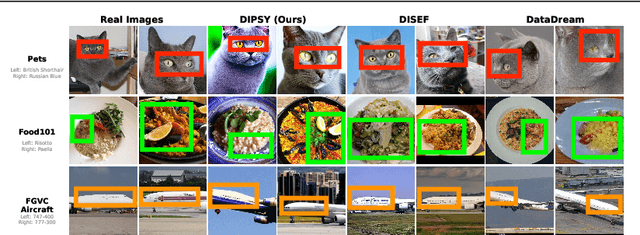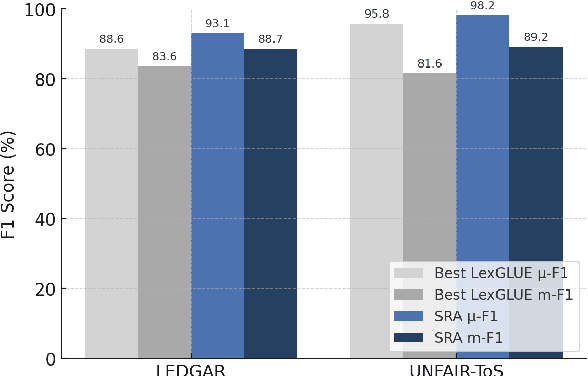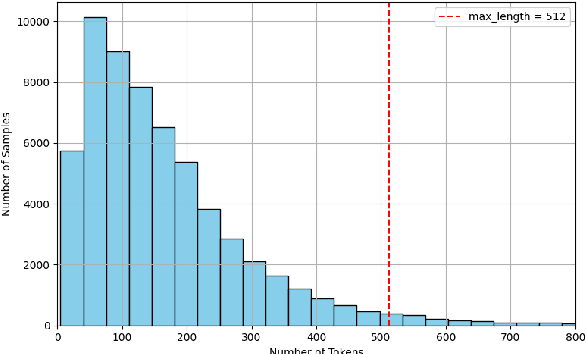Text Classification
Text classification is the process of categorizing text documents into predefined categories or labels.
Papers and Code
DNA-DetectLLM: Unveiling AI-Generated Text via a DNA-Inspired Mutation-Repair Paradigm
Sep 19, 2025The rapid advancement of large language models (LLMs) has blurred the line between AI-generated and human-written text. This progress brings societal risks such as misinformation, authorship ambiguity, and intellectual property concerns, highlighting the urgent need for reliable AI-generated text detection methods. However, recent advances in generative language modeling have resulted in significant overlap between the feature distributions of human-written and AI-generated text, blurring classification boundaries and making accurate detection increasingly challenging. To address the above challenges, we propose a DNA-inspired perspective, leveraging a repair-based process to directly and interpretably capture the intrinsic differences between human-written and AI-generated text. Building on this perspective, we introduce DNA-DetectLLM, a zero-shot detection method for distinguishing AI-generated and human-written text. The method constructs an ideal AI-generated sequence for each input, iteratively repairs non-optimal tokens, and quantifies the cumulative repair effort as an interpretable detection signal. Empirical evaluations demonstrate that our method achieves state-of-the-art detection performance and exhibits strong robustness against various adversarial attacks and input lengths. Specifically, DNA-DetectLLM achieves relative improvements of 5.55% in AUROC and 2.08% in F1 score across multiple public benchmark datasets.
GROK: From Quantitative Biomarkers to Qualitative Diagnosis via a Grounded MLLM with Knowledge-Guided Instruction
Oct 05, 2025Multimodal large language models (MLLMs) hold promise for integrating diverse data modalities, but current medical adaptations such as LLaVA-Med often fail to fully exploit the synergy between color fundus photography (CFP) and optical coherence tomography (OCT), and offer limited interpretability of quantitative biomarkers. We introduce GROK, a grounded multimodal large language model that jointly processes CFP, OCT, and text to deliver clinician-grade diagnoses of ocular and systemic disease. GROK comprises three core modules: Knowledge-Guided Instruction Generation, CLIP-Style OCT-Biomarker Alignment, and Supervised Instruction Fine-Tuning, which together establish a quantitative-to-qualitative diagnostic chain of thought, mirroring real clinical reasoning when producing detailed lesion annotations. To evaluate our approach, we introduce the Grounded Ophthalmic Understanding benchmark, which covers six disease categories and three tasks: macro-level diagnostic classification, report generation quality, and fine-grained clinical assessment of the generated chain of thought. Experiments show that, with only LoRA (Low-Rank Adaptation) fine-tuning of a 7B-parameter Qwen2 backbone, GROK outperforms comparable 7B and 32B baselines on both report quality and fine-grained clinical metrics, and even exceeds OpenAI o3. Code and data are publicly available in the GROK repository.
GILT: An LLM-Free, Tuning-Free Graph Foundational Model for In-Context Learning
Oct 06, 2025Graph Neural Networks (GNNs) are powerful tools for precessing relational data but often struggle to generalize to unseen graphs, giving rise to the development of Graph Foundational Models (GFMs). However, current GFMs are challenged by the extreme heterogeneity of graph data, where each graph can possess a unique feature space, label set, and topology. To address this, two main paradigms have emerged. The first leverages Large Language Models (LLMs), but is fundamentally text-dependent, thus struggles to handle the numerical features in vast graphs. The second pre-trains a structure-based model, but the adaptation to new tasks typically requires a costly, per-graph tuning stage, creating a critical efficiency bottleneck. In this work, we move beyond these limitations and introduce \textbf{G}raph \textbf{I}n-context \textbf{L}earning \textbf{T}ransformer (GILT), a framework built on an LLM-free and tuning-free architecture. GILT introduces a novel token-based framework for in-context learning (ICL) on graphs, reframing classification tasks spanning node, edge and graph levels in a unified framework. This mechanism is the key to handling heterogeneity, as it is designed to operate on generic numerical features. Further, its ability to understand class semantics dynamically from the context enables tuning-free adaptation. Comprehensive experiments show that GILT achieves stronger few-shot performance with significantly less time than LLM-based or tuning-based baselines, validating the effectiveness of our approach.
Training-Free Synthetic Data Generation with Dual IP-Adapter Guidance
Sep 26, 2025



Few-shot image classification remains challenging due to the limited availability of labeled examples. Recent approaches have explored generating synthetic training data using text-to-image diffusion models, but often require extensive model fine-tuning or external information sources. We present a novel training-free approach, called DIPSY, that leverages IP-Adapter for image-to-image translation to generate highly discriminative synthetic images using only the available few-shot examples. DIPSY introduces three key innovations: (1) an extended classifier-free guidance scheme that enables independent control over positive and negative image conditioning; (2) a class similarity-based sampling strategy that identifies effective contrastive examples; and (3) a simple yet effective pipeline that requires no model fine-tuning or external captioning and filtering. Experiments across ten benchmark datasets demonstrate that our approach achieves state-of-the-art or comparable performance, while eliminating the need for generative model adaptation or reliance on external tools for caption generation and image filtering. Our results highlight the effectiveness of leveraging dual image prompting with positive-negative guidance for generating class-discriminative features, particularly for fine-grained classification tasks.
Effectiveness of Large Multimodal Models in Detecting Disinformation: Experimental Results
Sep 26, 2025The proliferation of disinformation, particularly in multimodal contexts combining text and images, presents a significant challenge across digital platforms. This study investigates the potential of large multimodal models (LMMs) in detecting and mitigating false information. We propose to approach multimodal disinformation detection by leveraging the advanced capabilities of the GPT-4o model. Our contributions include: (1) the development of an optimized prompt incorporating advanced prompt engineering techniques to ensure precise and consistent evaluations; (2) the implementation of a structured framework for multimodal analysis, including a preprocessing methodology for images and text to comply with the model's token limitations; (3) the definition of six specific evaluation criteria that enable a fine-grained classification of content, complemented by a self-assessment mechanism based on confidence levels; (4) a comprehensive performance analysis of the model across multiple heterogeneous datasets Gossipcop, Politifact, Fakeddit, MMFakeBench, and AMMEBA highlighting GPT-4o's strengths and limitations in disinformation detection; (5) an investigation of prediction variability through repeated testing, evaluating the stability and reliability of the model's classifications; and (6) the introduction of confidence-level and variability-based evaluation methods. These contributions provide a robust and reproducible methodological framework for automated multimodal disinformation analysis.
Multi-View Camera System for Variant-Aware Autonomous Vehicle Inspection and Defect Detection
Sep 30, 2025Ensuring that every vehicle leaving a modern production line is built to the correct \emph{variant} specification and is free from visible defects is an increasingly complex challenge. We present the \textbf{Automated Vehicle Inspection (AVI)} platform, an end-to-end, \emph{multi-view} perception system that couples deep-learning detectors with a semantic rule engine to deliver \emph{variant-aware} quality control in real time. Eleven synchronized cameras capture a full 360{\deg} sweep of each vehicle; task-specific views are then routed to specialised modules: YOLOv8 for part detection, EfficientNet for ICE/EV classification, Gemini-1.5 Flash for mascot OCR, and YOLOv8-Seg for scratch-and-dent segmentation. A view-aware fusion layer standardises evidence, while a VIN-conditioned rule engine compares detected features against the expected manifest, producing an interpretable pass/fail report in \(\approx\! 300\,\text{ms}\). On a mixed data set of Original Equipment Manufacturer(OEM) vehicle data sets of four distinct models plus public scratch/dent images, AVI achieves \textbf{ 93 \%} verification accuracy, \textbf{86 \%} defect-detection recall, and sustains \(\mathbf{3.3}\) vehicles/min, surpassing single-view or no segmentation baselines by large margins. To our knowledge, this is the first publicly reported system that unifies multi-camera feature validation with defect detection in a deployable automotive setting in industry.
Comparative Analysis of Tokenization Algorithms for Low-Resource Language Dzongkha
Sep 18, 2025Large Language Models (LLMs) are gaining popularity and improving rapidly. Tokenizers are crucial components of natural language processing, especially for LLMs. Tokenizers break down input text into tokens that models can easily process while ensuring the text is accurately represented, capturing its meaning and structure. Effective tokenizers enhance the capabilities of LLMs by improving a model's understanding of context and semantics, ultimately leading to better performance in various downstream tasks, such as translation, classification, sentiment analysis, and text generation. Most pre-trained tokenizers are suitable for high-resource languages like English but perform poorly for low-resource languages. Dzongkha, Bhutan's national language spoken by around seven hundred thousand people, is a low-resource language, and its linguistic complexity poses unique NLP challenges. Despite some progress, significant research in Dzongkha NLP is lacking, particularly in tokenization. This study evaluates the training and performance of three common tokenization algorithms in comparison to other popular methods. Specifically, Byte-Pair Encoding (BPE), WordPiece, and SentencePiece (Unigram) were evaluated for their suitability for Dzongkha. Performance was assessed using metrics like Subword Fertility, Proportion of Continued Words, Normalized Sequence Length, and execution time. The results show that while all three algorithms demonstrate potential, SentencePiece is the most effective for Dzongkha tokenization, paving the way for further NLP advancements. This underscores the need for tailored approaches for low-resource languages and ongoing research. In this study, we presented three tokenization algorithms for Dzongkha, paving the way for building Dzongkha Large Language Models.
Are Humans as Brittle as Large Language Models?
Sep 09, 2025The output of large language models (LLM) is unstable, due to both non-determinism of the decoding process as well as to prompt brittleness. While the intrinsic non-determinism of LLM generation may mimic existing uncertainty in human annotations through distributional shifts in outputs, it is largely assumed, yet unexplored, that the prompt brittleness effect is unique to LLMs. This raises the question: do human annotators show similar sensitivity to instruction changes? If so, should prompt brittleness in LLMs be considered problematic? One may alternatively hypothesize that prompt brittleness correctly reflects human annotation variances. To fill this research gap, we systematically compare the effects of prompt modifications on LLMs and identical instruction modifications for human annotators, focusing on the question of whether humans are similarly sensitive to prompt perturbations. To study this, we prompt both humans and LLMs for a set of text classification tasks conditioned on prompt variations. Our findings indicate that both humans and LLMs exhibit increased brittleness in response to specific types of prompt modifications, particularly those involving the substitution of alternative label sets or label formats. However, the distribution of human judgments is less affected by typographical errors and reversed label order than that of LLMs.
A Tale of LLMs and Induced Small Proxies: Scalable Agents for Knowledge Mining
Oct 01, 2025At the core of Deep Research is knowledge mining, the task of extracting structured information from massive unstructured text in response to user instructions. Large language models (LLMs) excel at interpreting such instructions but are prohibitively expensive to deploy at scale, while traditional pipelines of classifiers and extractors remain efficient yet brittle and unable to generalize to new tasks. We introduce Falconer, a collaborative framework that combines the agentic reasoning of LLMs with lightweight proxy models for scalable knowledge mining. In Falconer, LLMs act as planners, decomposing user instructions into executable pipelines, and as annotators, generating supervision to train small proxies. The framework unifies classification and extraction into two atomic operations, get label and get span, enabling a single instruction-following model to replace multiple task-specific components. To evaluate the consistency between proxy models incubated by Falconer and annotations provided by humans and large models, we construct new benchmarks covering both planning and end-to-end execution. Experiments show that Falconer closely matches state-of-the-art LLMs in instruction-following accuracy while reducing inference cost by up to 90% and accelerating large-scale knowledge mining by more than 20x, offering an efficient and scalable foundation for Deep Research.
Selective Retrieval-Augmentation for Long-Tail Legal Text Classification
Aug 28, 2025



Legal text classification is a fundamental NLP task in the legal domain. Benchmark datasets in this area often exhibit a long-tail label distribution, where many labels are underrepresented, leading to poor model performance on rare classes. This paper proposes Selective Retrieval-Augmentation (SRA) as a solution to this problem. SRA focuses on augmenting samples belonging to low-frequency labels in the training set, preventing the introduction of noise for well-represented classes, and requires no changes to the model architecture. Retrieval is performed only from the training data to ensure there is no potential information leakage, removing the need for external corpora simultaneously. The proposed SRA method is tested on two legal text classification benchmark datasets with long-tail distributions: LEDGAR (single-label) and UNFAIR-ToS (multi-label). The results indicate that SRA attains higher micro-F1 and macro-F1 scores compared to all current LexGLUE baselines across both datasets, illustrating consistent improvements in long-tail legal text classification.
 Add to Chrome
Add to Chrome Add to Firefox
Add to Firefox Add to Edge
Add to Edge